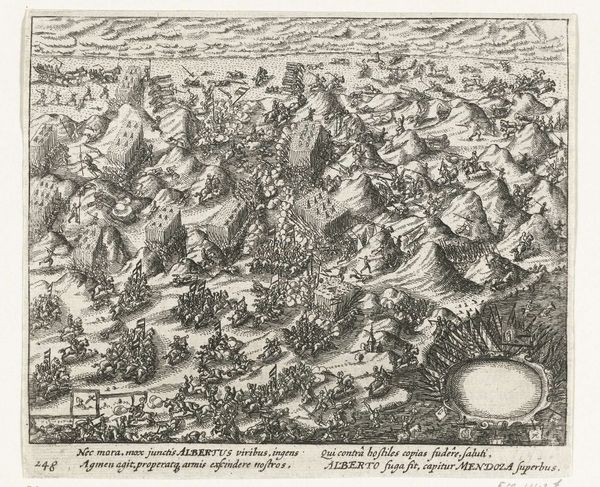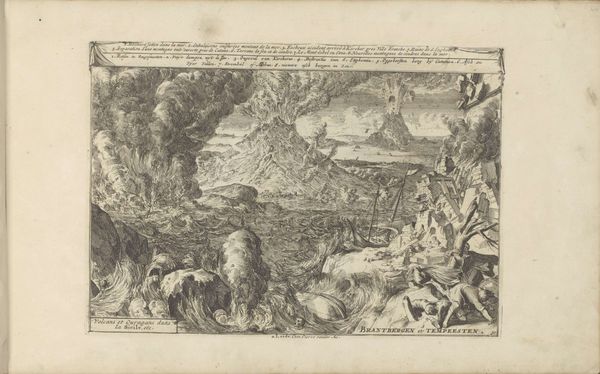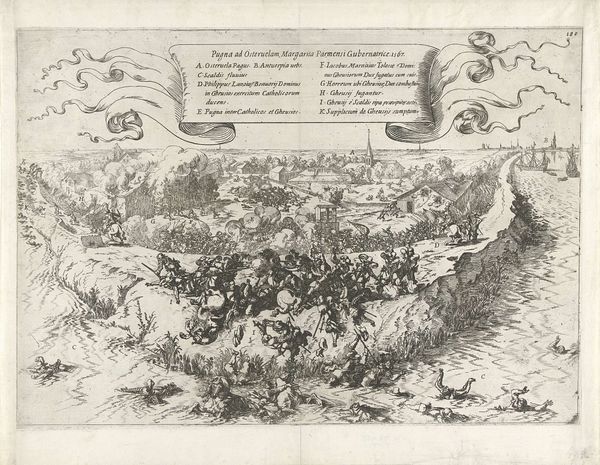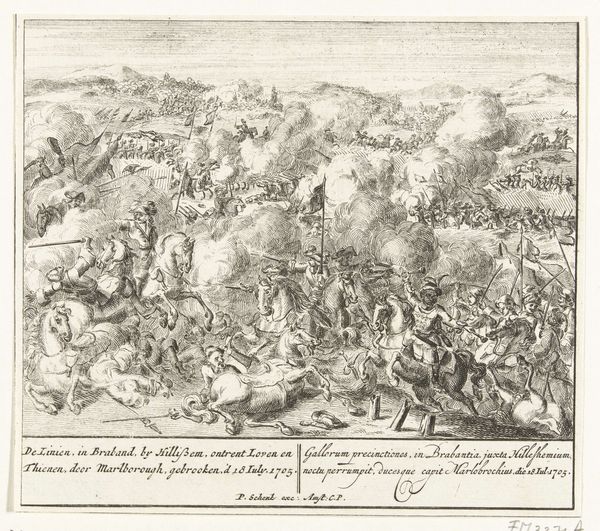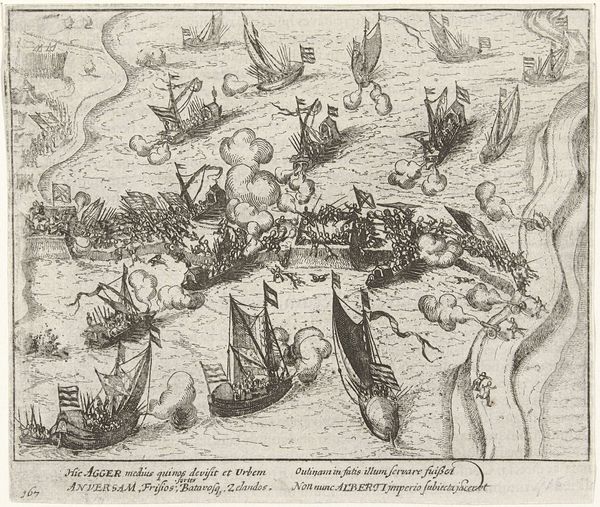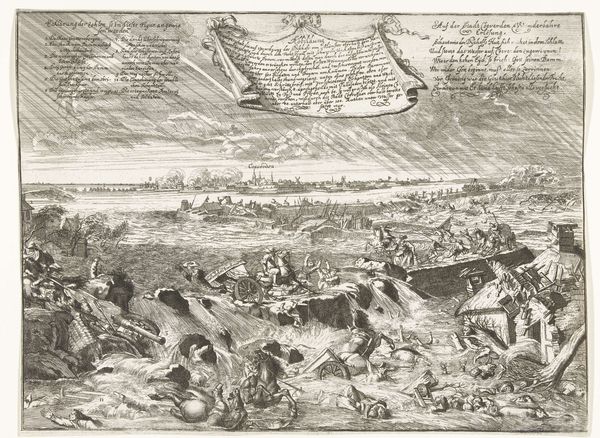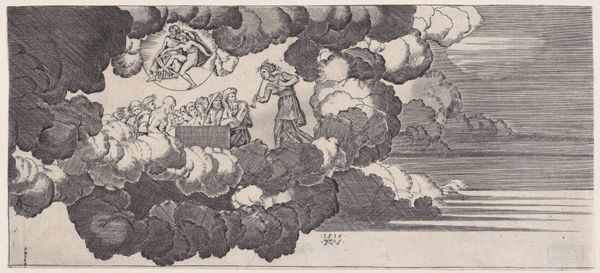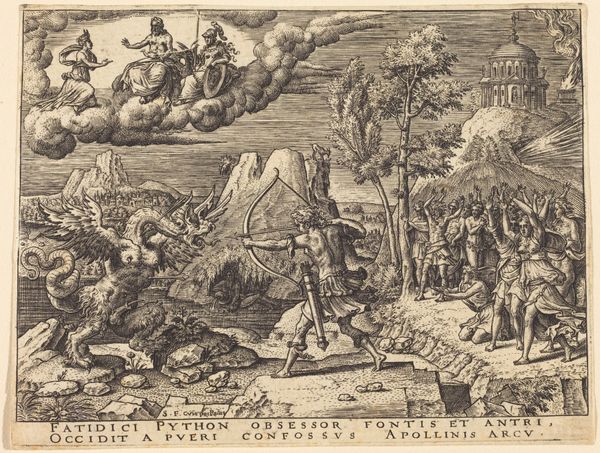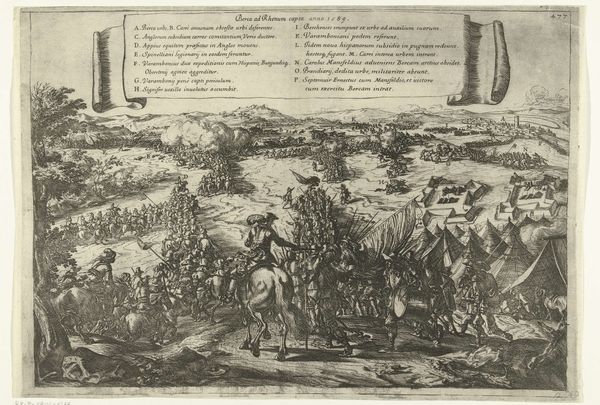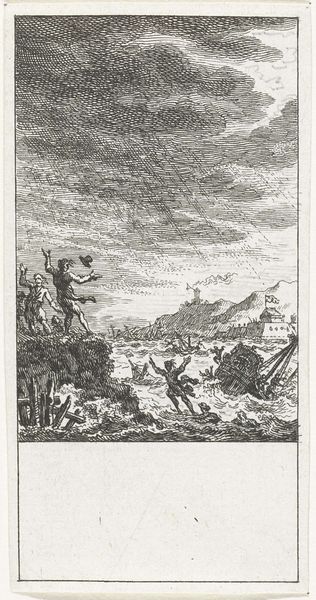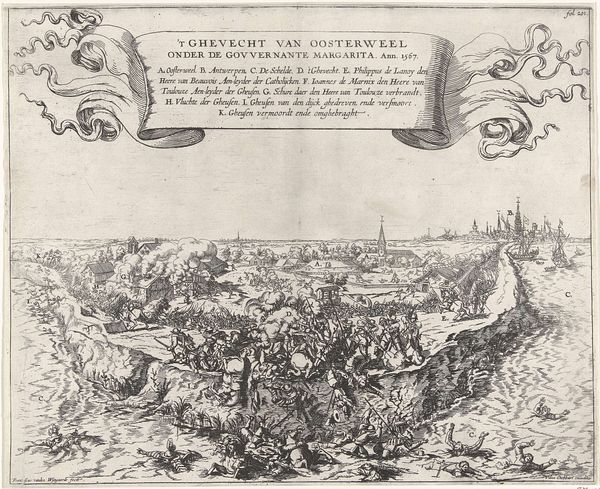
print, engraving
#
narrative-art
#
baroque
# print
#
line
#
cityscape
#
history-painting
#
engraving
#
realism
Dimensions: height 128 mm, width 167 mm
Copyright: Rijks Museum: Open Domain
Editor: This print, "Schipbrug van Parma over de Schelde, 1585", or "Ship Bridge of Parma over the Scheldt, 1585", by Lamberecht Causé, created between 1670 and 1699, shows an explosion ripping apart a bridge over water, with figures falling everywhere. There's a real sense of chaos. How do you interpret this work, particularly considering the artistic choices made in an engraving like this? Curator: What strikes me is how the engraving medium itself contributes to the story being told. Consider the labor involved: the deliberate carving of lines to depict destruction and its human cost. This isn't just about illustrating a historical event, it's about the material processes – the metal plate, the tools, the printing press – all contributing to a narrative about warfare and its impact. Look at the sheer volume of detailed labor etched into portraying the cloud of smoke, which required time, expense and human cost to deliver. What do you think this emphasis suggests? Editor: It’s like the act of creation, the making of the print, mirrors the act of destruction it depicts. Almost like each line cut into the plate is another blow struck. Do you think this focus on process also elevates the role of the printmaker? Curator: Absolutely. The printmaker becomes more than just a recorder of history; they are active participants in shaping our understanding of the event. Think about who this print was made for: a burgeoning merchant class, keen to visually "consume" history and perhaps identify themselves within its grand narratives. The commodification of historical violence! Do you find that unsettling at all? Editor: It's definitely unsettling. Viewing history as something to be bought and consumed, especially something as brutal as this, shifts our perspective on what value society places on conflict. This changes everything. Thank you. Curator: And thank you! Analyzing the intersection of materials, production, and consumption adds a new depth to understanding art, even works depicting destruction.
Comments
No comments
Be the first to comment and join the conversation on the ultimate creative platform.
